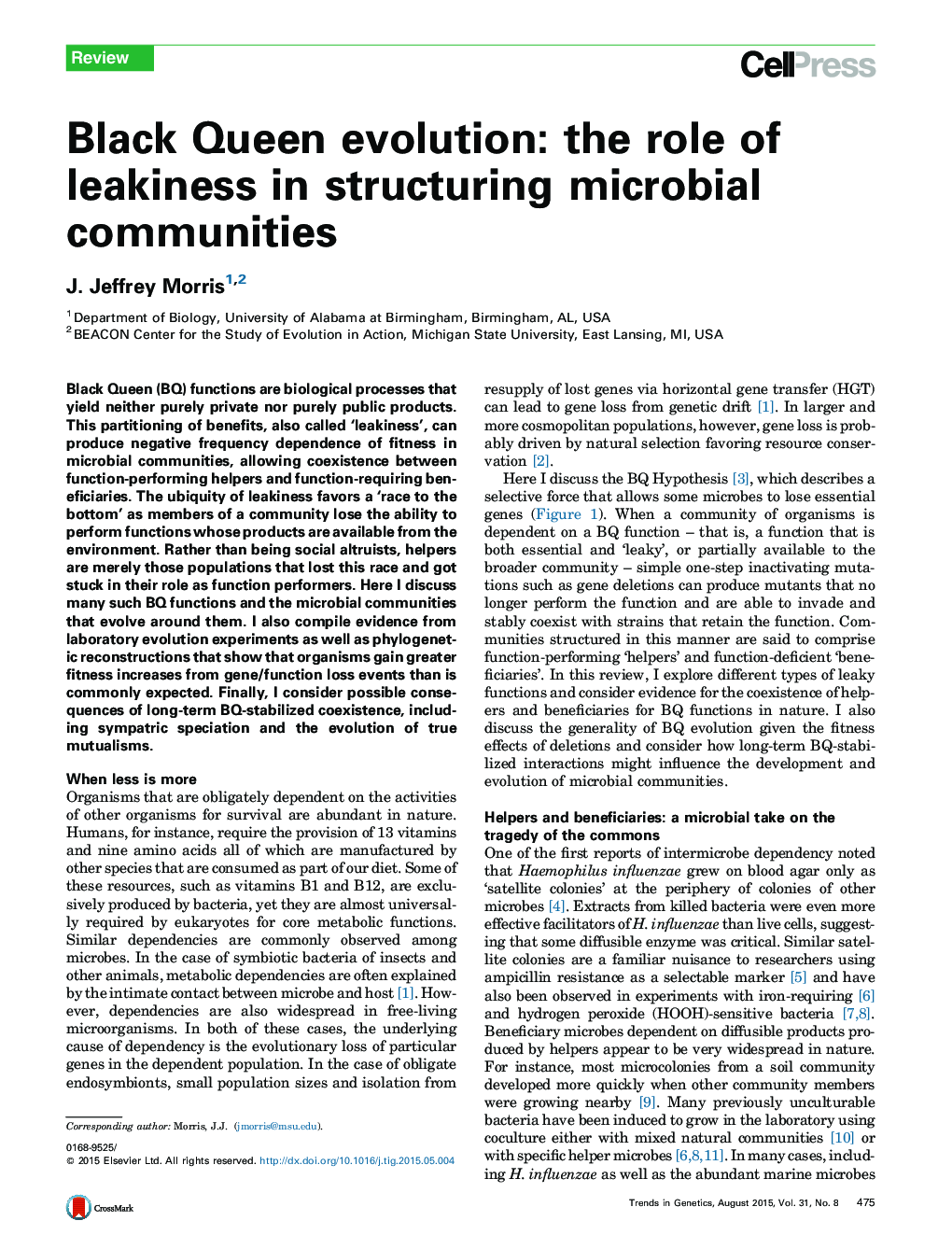| کد مقاله | کد نشریه | سال انتشار | مقاله انگلیسی | نسخه تمام متن |
|---|---|---|---|---|
| 2824681 | 1161843 | 2015 | 8 صفحه PDF | دانلود رایگان |
• The products of biological functions are rarely purely private or purely public but instead exist along a ‘leakiness spectrum’ with greater or lesser ratios of public to private components.
• When costly leaky functions are important components of fitness in an environment, evolution can favor coexistence between helpers that perform the function and beneficiaries that require it.
• The average fitness advantage of losing a gene/function is greater than is commonly expected.
• The coexistence stabilized by leaky BQ functions can allow interesting downstream consequences such as sympatric speciation and the evolution of mutualism.
• BQ gene loss and other types of genome streamlining help balance gene gain by HGT and gene duplication in determining steady-state genome sizes for microbes.
Black Queen (BQ) functions are biological processes that yield neither purely private nor purely public products. This partitioning of benefits, also called ‘leakiness’, can produce negative frequency dependence of fitness in microbial communities, allowing coexistence between function-performing helpers and function-requiring beneficiaries. The ubiquity of leakiness favors a ‘race to the bottom’ as members of a community lose the ability to perform functions whose products are available from the environment. Rather than being social altruists, helpers are merely those populations that lost this race and got stuck in their role as function performers. Here I discuss many such BQ functions and the microbial communities that evolve around them. I also compile evidence from laboratory evolution experiments as well as phylogenetic reconstructions that show that organisms gain greater fitness increases from gene/function loss events than is commonly expected. Finally, I consider possible consequences of long-term BQ-stabilized coexistence, including sympatric speciation and the evolution of true mutualisms.
Journal: - Volume 31, Issue 8, August 2015, Pages 475–482
